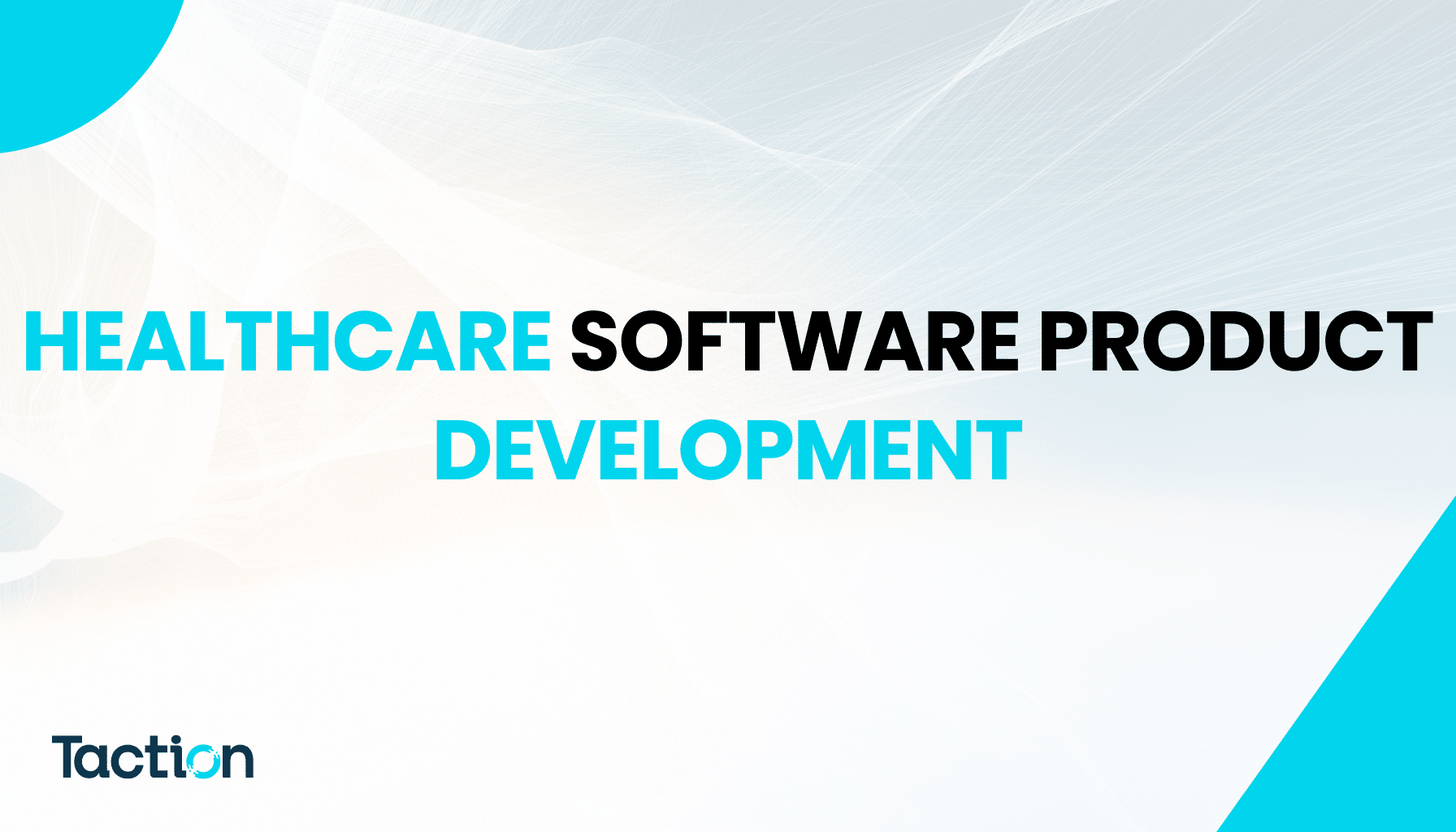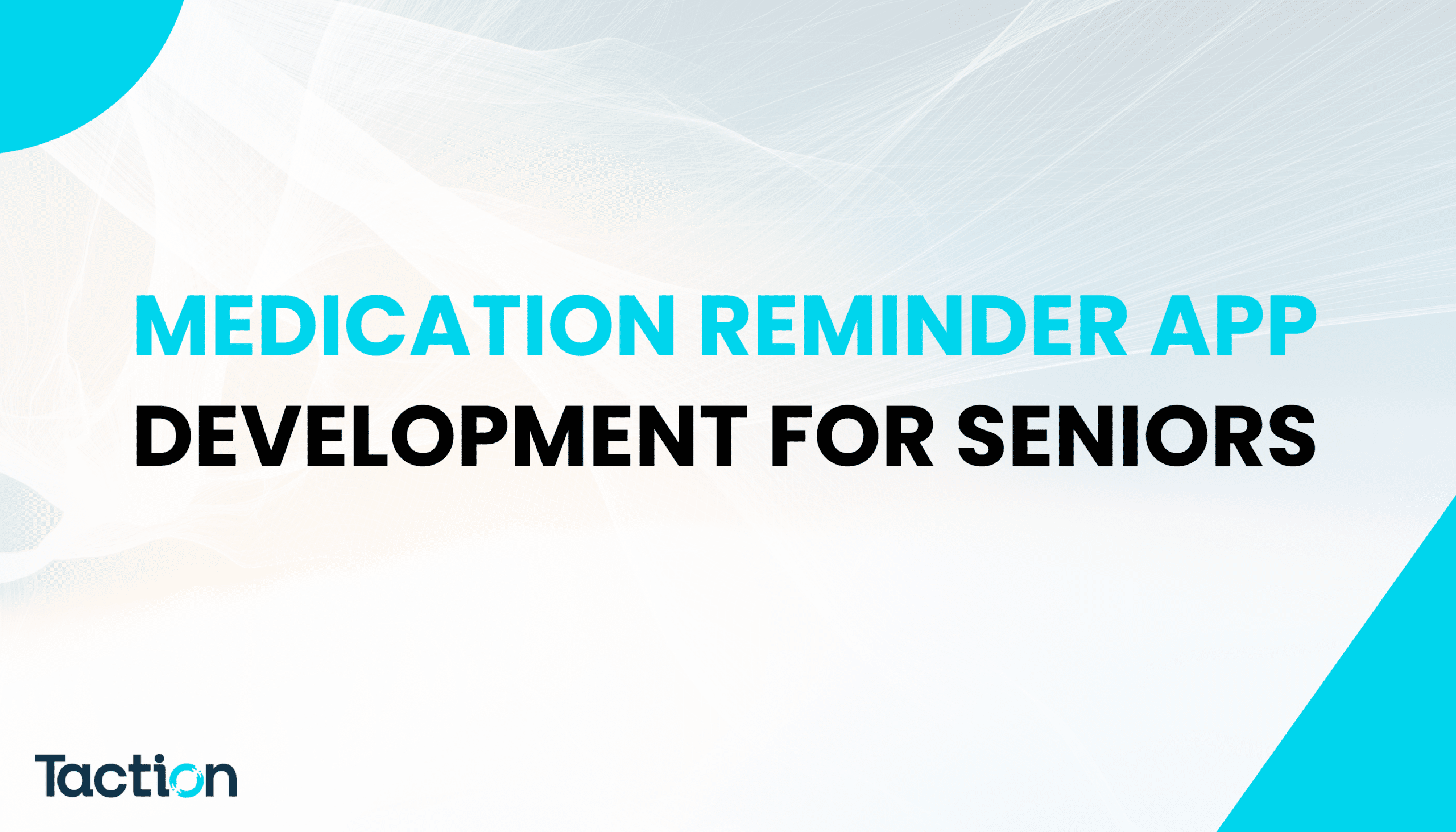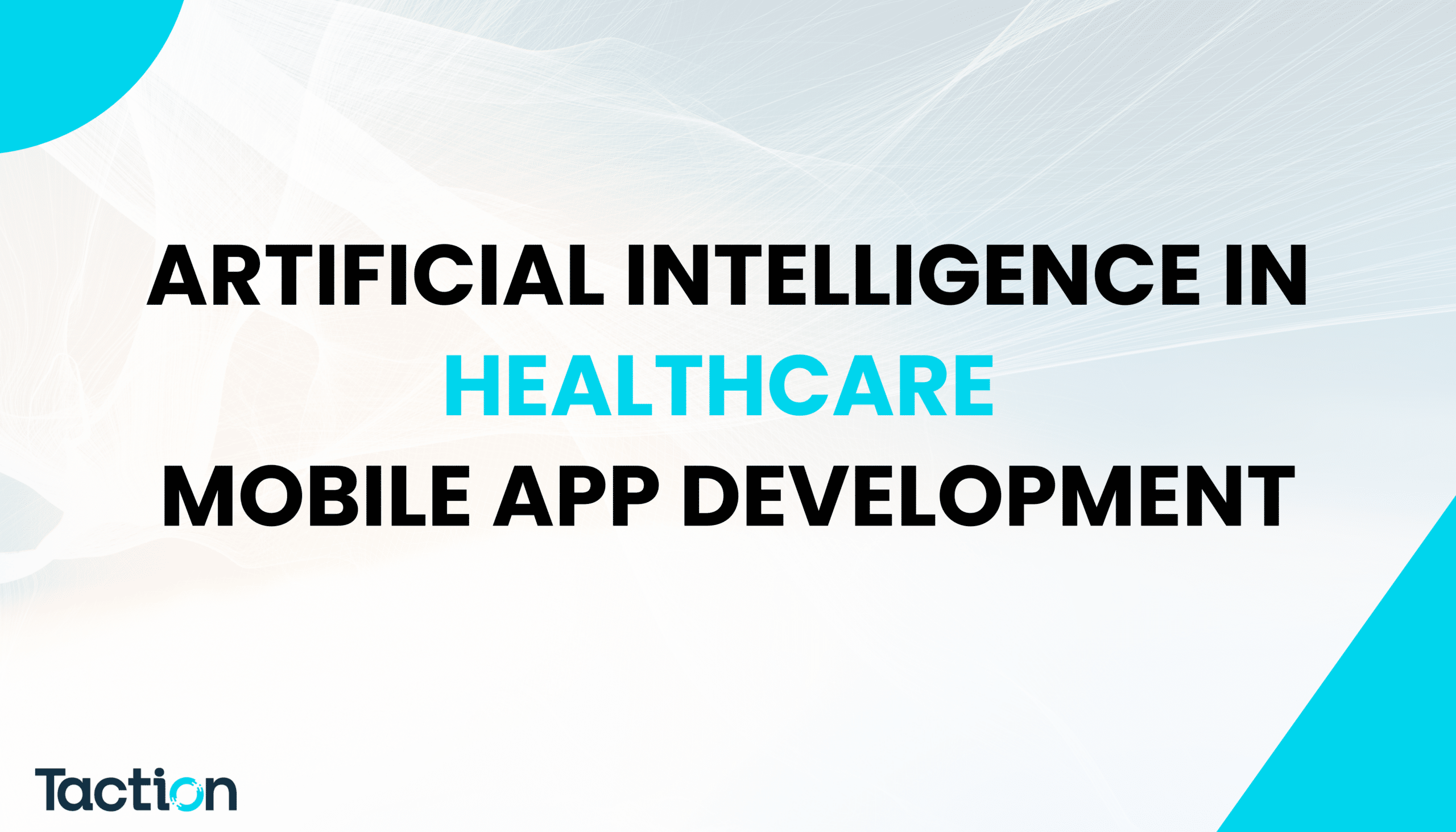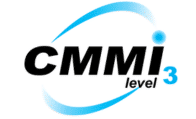Introduction
In today’s fast-evolving healthcare landscape, legacy software systems are quickly becoming a burden rather than a backbone. Many hospitals and clinics across the U.S. still rely on outdated platforms that struggle to keep up with modern demands—creating delays, data silos, and costly inefficiencies. As patient expectations soar, and regulations like HIPAA grow more stringent, these legacy systems make it harder for providers to deliver timely, personalized, and compliant care.
Healthcare organizations are under immense pressure to modernize not just for operational efficiency but also to ensure data security, interoperability, and a seamless patient experience. The gap between legacy systems and today’s digital-first healthcare environment is widening fast.
At Taction Software, we’ve spent over 20 years helping healthcare organizations in the U.S. modernize their legacy systems into agile, secure, and future-ready solutions. Our deep domain expertise and tailored modernization strategies ensure that transitions are smooth, scalable, and aligned with clinical goals. If you’re ready to embrace transformation without disrupting care, you’re in the right hands.
Learn why Software Engineering of America is redefining industries with secure, scalable solutions.
What Is Healthcare Software Modernization?
Healthcare software modernization is the process of transforming outdated legacy systems into modern, scalable, and integrated solutions that meet today’s clinical, operational, and regulatory demands. It involves reengineering old software infrastructures—often rigid, siloed, and unsupported—into agile systems that enable seamless data flow, better user experiences, and enhanced decision-making.
Understanding Legacy Healthcare Systems
Legacy healthcare systems refer to older software solutions that were once cutting-edge but now fall short in today’s fast-paced environment. These often include legacy EMRs, outdated billing systems, static patient scheduling tools, or on-premise applications that lack cloud capabilities and real-time integration. While they may still function, their limitations in flexibility, security, and data sharing pose serious risks to healthcare providers and patients alike.
Why Modernization Is Crucial in 2025 and Beyond
The future of healthcare demands more than functionality—it demands agility, interoperability, and patient-centricity. With the rise of remote care, AI-driven diagnostics, and value-based models, outdated systems simply can’t keep up. Modernizing legacy software empowers organizations to break data silos, enhance care coordination, and stay ahead of compliance mandates, all while creating better outcomes for both patients and providers.
Key Drivers for Modernizing Legacy Healthcare Systems
The push to modernize legacy healthcare systems isn’t just about staying current—it’s about survival in an industry where technology and patient care are tightly intertwined. Several key factors are driving healthcare organizations in the U.S. to move beyond outdated software and embrace modern, future-ready solutions.
HIPAA and other federal compliance regulations are becoming more complex, and legacy systems often lack the built-in features to meet these evolving standards. Without modernization, providers risk costly violations and data breaches.
Another major driver is EHR/EMR interoperability. Modern healthcare relies on seamless data exchange between systems, providers, and platforms. Legacy software simply wasn’t built for this level of integration, leading to fragmented care and communication gaps.
Security is also top of mind. Outdated systems are more vulnerable to cyber threats, ransomware, and data leaks, which can jeopardize sensitive patient information.
Lastly, the momentum toward cloud migration and digital transformation is undeniable. Healthcare providers want agility, scalability, and remote accessibility—something legacy systems just can’t offer. Modernization brings all these advantages to the table, making it a strategic necessity, not just an IT upgrade.
Ultimate Step-by-Step Guide to Blockchain Technology for Secure Healthcare Software Solutions
Signs Your Healthcare System Needs Modernization
If your healthcare organization is still running on legacy software, chances are you’re already feeling the pinch. Outdated systems don’t just slow you down—they can actively hold you back from delivering efficient, patient-centered care. Recognizing the signs early can help you take proactive steps toward modernization before issues escalate.
Legacy System Red Flags
Frequent downtime, unreliable performance, and skyrocketing maintenance costs are major indicators that your system is past its prime. If your software relies on outdated technology that’s no longer supported, it puts your entire infrastructure at risk—and your compliance status in jeopardy.
Patient & Staff Complaints
When patients face long wait times, or staff are stuck with clunky interfaces and redundant data entry, it’s a clear sign your tools are failing the people who use them most. Poor usability not only drains productivity but also affects the quality of care and satisfaction on both ends.
Benefits of Modernizing Healthcare Software
Modernizing healthcare software is more than a technical upgrade—it’s a strategic investment that transforms how care is delivered, managed, and experienced. By moving away from legacy systems, healthcare providers unlock a wide range of long-term benefits that directly impact patient outcomes and operational efficiency.
One of the most immediate advantages is faster workflows and reduced costs. Modern platforms streamline repetitive tasks, reduce manual data entry, and eliminate delays caused by outdated interfaces—freeing up valuable time for clinical and administrative staff.
Patient engagement and care coordination also improve dramatically. With integrated communication tools, mobile access, and real-time data sharing, providers can offer more personalized, connected care across departments and locations.
Modern software is also built for data analytics and AI-readiness. Whether it’s predictive modeling for population health or automation of clinical workflows, a modern system lays the foundation for smarter decision-making and proactive care.
Most importantly, modernization future-proofs your IT infrastructure. With cloud scalability, modular design, and easy updates, your system stays adaptable as technology and regulatory standards evolve—ensuring you’re not just keeping up, but staying ahead.
Modernization Approaches: What Works Best Today?
Modernizing legacy healthcare systems isn’t a one-size-fits-all process. The best approach depends on your current infrastructure, long-term goals, and budget. Let’s explore the most common modernization strategies and how they align with today’s healthcare landscape.
Replatforming vs. Rebuilding vs. Replacing
Replatforming involves migrating your existing application to a new platform—often the cloud—while keeping the core architecture mostly intact. It’s faster and more cost-effective but may still carry forward some legacy limitations.
Rebuilding means redesigning and recoding the application from the ground up. While it requires more time and resources, it allows for full customization, improved performance, and seamless integration with modern technologies.
Replacing involves phasing out your old system entirely in favor of a new, off-the-shelf or custom-built solution. This is ideal when legacy systems are too outdated or risky to maintain but can cause temporary disruption if not planned well.
Integration with Modern Platforms
Regardless of the approach, successful modernization must prioritize interoperability. Leveraging standards like HL7 and FHIR, tools such as Mirth Connect, and adding modules for telehealth, patient portals, and secure messaging ensure your system is ready to connect, scale, and evolve. Integration with these platforms brings flexibility, compliance, and improved care coordination—all essential for the future of digital healthcare.
How to Plan a Successful Modernization Strategy
A successful healthcare software modernization project starts with a clear, well-structured roadmap. Jumping in without a plan can lead to disruptions, compliance risks, and wasted resources. Here’s a simplified step-by-step approach that ensures a smooth transition:
Start with a comprehensive audit of your existing system. Identify performance gaps, security issues, and features that no longer meet clinical or operational needs. Then, move on to choosing the right tech stack—considering factors like scalability, integration capabilities, cloud-readiness, and regulatory compliance.
Next, define clear KPIs to measure success. These could include reduced processing times, improved patient satisfaction scores, or lower IT maintenance costs. Finally, execute the project in phases—starting with low-risk modules—so your team can adapt without disrupting care delivery.
Collaborating with Healthcare IT Experts
This journey is much smoother when guided by a partner who understands both healthcare and technology. With over 20 years of experience in healthcare IT, we specialize in building tailored modernization strategies that align with your clinical workflows, compliance needs, and digital transformation goals. Our proven approach ensures you’re not just upgrading systems—you’re unlocking smarter, more sustainable care.
Technology Stack for Modern Healthcare Software
Choosing the right technology stack is a critical part of any healthcare software modernization journey. A modern tech stack not only boosts performance and usability but also ensures long-term scalability, security, and regulatory compliance. Today’s healthcare applications are built using a mix of cloud-native platforms, secure backend frameworks, and compliance-driven tools that work together to create agile, interoperable systems.
Popular choices include React or Angular for intuitive user interfaces, Node.js, .NET Core, or Python/Django for robust backend processing, and AWS or Microsoft Azure for cloud infrastructure. These tools offer the flexibility needed to support patient portals, EHRs, billing systems, and analytics dashboards—all in one ecosystem.
Interoperability & Data Security Tools
Modern systems must exchange data effortlessly and securely. That’s where HL7, SMART on FHIR, and custom healthcare APIs come into play. These standards ensure that different systems, devices, and providers can communicate in real-time. Combined with cloud-native security tools, encryption, and role-based access control, these technologies provide the foundation for safe, compliant, and connected care experiences in the digital era.
Cost of Healthcare Software Modernization in the USA
The cost of modernizing healthcare software in the USA can vary widely, depending on several key factors. These include the size and complexity of your current system, the scope of modernization (replatforming, rebuilding, or replacing), the technologies chosen, and the level of integration required with existing tools like EMRs, billing, or patient engagement systems.
While modernization does involve an upfront investment, it’s important to view it through an ROI-focused lens. Legacy systems often come with hidden costs—high maintenance, recurring downtimes, security risks, and inefficient workflows that drain productivity. Upgrading to a modern platform reduces these burdens while opening new revenue opportunities through streamlined operations, faster patient onboarding, and improved care delivery.
For most healthcare organizations, modernization offers long-term savings that far outweigh the initial costs. Instead of continuously patching outdated systems, you gain a scalable, secure, and future-ready infrastructure that adapts to evolving compliance standards and technology trends—maximizing value for both patients and providers.
Real-World Case Studies: Transformations That Worked
Modernizing legacy healthcare systems isn’t just a theory—it’s already transforming real practices across the U.S. One example is a mid-sized clinic in Texas that relied on a decades-old EMR system. Staff struggled with frequent system crashes, redundant data entry, and limited access to patient records outside the facility. This led to delays in care, billing errors, and growing patient dissatisfaction.
After partnering with our healthcare IT team, the clinic underwent a complete modernization process. We rebuilt their core system using cloud-native architecture, integrated SMART on FHIR APIs for real-time interoperability, and added a mobile-friendly patient portal. The transformation was seamless and phased to avoid operational disruptions.
The results? A 40% improvement in workflow efficiency, a 30% reduction in administrative costs, and a significant boost in patient satisfaction. What was once a bottleneck became a competitive advantage—and the clinic now has a scalable system ready for the future of care delivery.
Why Choose Us for Modernizing Your Legacy Healthcare Software?
Modernizing healthcare software isn’t just about upgrading technology—it’s about choosing the right partner who understands the unique challenges of your industry. With over 20 years of experience in healthcare IT, we’ve helped hospitals, clinics, and private practices across the U.S. transition from outdated systems to modern, efficient, and scalable solutions that truly work.
What sets us apart is our deep understanding of HIPAA regulations and healthcare compliance, ensuring every modernization project meets the highest standards for data privacy and security. We don’t believe in one-size-fits-all solutions. Instead, we create a custom modernization roadmap tailored to your current infrastructure, clinical workflows, and long-term goals.
Our approach focuses on seamless transitions that minimize disruptions while maximizing results. Whether you’re replatforming, rebuilding, or replacing your legacy system, we guide you through every step with clarity and confidence.
Ready to modernize your healthcare software without the guesswork?
Reach out today for a free modernization consultation, and let’s unlock the full potential of your healthcare practice—safely, strategically, and successfully.
Frequently Asked Questions (FAQs)
Legacy software refers to outdated healthcare systems that are still in use despite being based on old technology. Examples include aging EMRs, billing platforms, and scheduling tools that lack interoperability, scalability, or support.
Modernization improves efficiency, reduces operational costs, enhances patient experiences, and ensures compliance with evolving healthcare regulations like HIPAA.
Security vulnerabilities, data silos, compliance gaps, poor user experience, and limited scalability are major risks associated with continuing to use outdated healthcare systems.
If your EHR frequently crashes, lacks support, struggles to integrate with other systems, or leads to workflow inefficiencies—it’s likely time for an upgrade.
Modernization involves updating or replacing outdated systems, while migration typically refers to moving data or applications to a new environment, such as the cloud.
Costs vary based on system complexity, but modernization often delivers a strong ROI by cutting maintenance costs and improving efficiency over time.
Timelines range from a few months to a year depending on the size of your system, the approach (replatforming vs. rebuilding), and integration needs.
Yes, using tools like HL7, FHIR, and Mirth Connect, it’s possible to bridge legacy systems with modern platforms for better interoperability and continuity.
Modern healthcare software must comply with HIPAA, HITECH, and other local or federal data privacy and security standards in the U.S.
With 20+ years of healthcare IT expertise, HIPAA-compliant solutions, and a custom roadmap for every client, Taction Software ensures a smooth, secure, and successful modernization journey.











